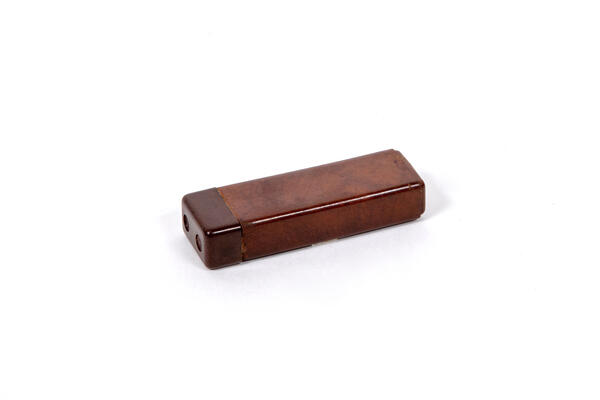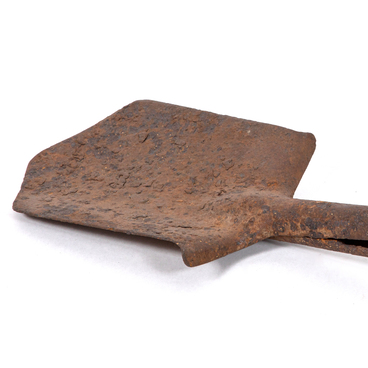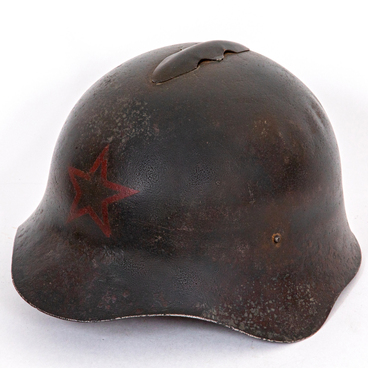During World War II, the German personal protective equipment, in addition to a gas mask and an anti-yperite cape made of thick cloth, included means for decontaminating skin, uniforms, and weapons. Every Wehrmacht soldier carried a small brown box with ten losantin tablets in the lid of the gas mask canister. It was used to decontaminate the skin in case of contact with poisonous blister agents, such as mustard gas or lewisite.
The mustard gas droplets in contact with the skin caused serious damage — extensive redness, blisters, ulcers, and necroses. Since the mustard gas had a slower and stealthier effect, it took several hours for the damage to become noticeable. Liquid lewisite, on the contrary, penetrated the skin within minutes and instantly caused inflammation, redness, blisters, and non-healing ulcers.
Losantin had to be applied immediately on the battlefield. If the skin was affected, a soldier had to open the case, crush the pills in the palm of his hand, and mix with water or saliva to form a paste. The resulting paste was rubbed evenly, but without much pressure on the affected surface, and in 10-15 minutes the soldier rinsed the area with water or wiped it with a damp cloth.
The active calcium hypochlorite, a component of losantin, reacted with the poisonous chemicals and neutralized them. However, the chemical itself was toxic. The first lines of the instruction stated: ‘For external use only! Avoid contact with eyes, mouth, and genitalia! ’
The rectangular case with a lid, in which the losantin tablets were kept, was made of Bakelite. This material was obtained in 1909 by chemist Leo Baekeland. It was the first synthetic plastic that did not soften at high temperature — it could withstand heat up to 300 degrees, and at higher temperatures it would char, but would not burn completely. Water, diluted alkalis, and acids also had no impact on it.
The displayed German Bakelite case was discovered during battlefield excavations, conducted in 2008-2010 by the Noyabrsk joint search party ‘Vitalis’ in the Nelidovsky district, Tver Oblast. The ‘Vitalis’ commander, Natalia Usenko, donated the item to the museum.
The mustard gas droplets in contact with the skin caused serious damage — extensive redness, blisters, ulcers, and necroses. Since the mustard gas had a slower and stealthier effect, it took several hours for the damage to become noticeable. Liquid lewisite, on the contrary, penetrated the skin within minutes and instantly caused inflammation, redness, blisters, and non-healing ulcers.
Losantin had to be applied immediately on the battlefield. If the skin was affected, a soldier had to open the case, crush the pills in the palm of his hand, and mix with water or saliva to form a paste. The resulting paste was rubbed evenly, but without much pressure on the affected surface, and in 10-15 minutes the soldier rinsed the area with water or wiped it with a damp cloth.
The active calcium hypochlorite, a component of losantin, reacted with the poisonous chemicals and neutralized them. However, the chemical itself was toxic. The first lines of the instruction stated: ‘For external use only! Avoid contact with eyes, mouth, and genitalia! ’
The rectangular case with a lid, in which the losantin tablets were kept, was made of Bakelite. This material was obtained in 1909 by chemist Leo Baekeland. It was the first synthetic plastic that did not soften at high temperature — it could withstand heat up to 300 degrees, and at higher temperatures it would char, but would not burn completely. Water, diluted alkalis, and acids also had no impact on it.
The displayed German Bakelite case was discovered during battlefield excavations, conducted in 2008-2010 by the Noyabrsk joint search party ‘Vitalis’ in the Nelidovsky district, Tver Oblast. The ‘Vitalis’ commander, Natalia Usenko, donated the item to the museum.



